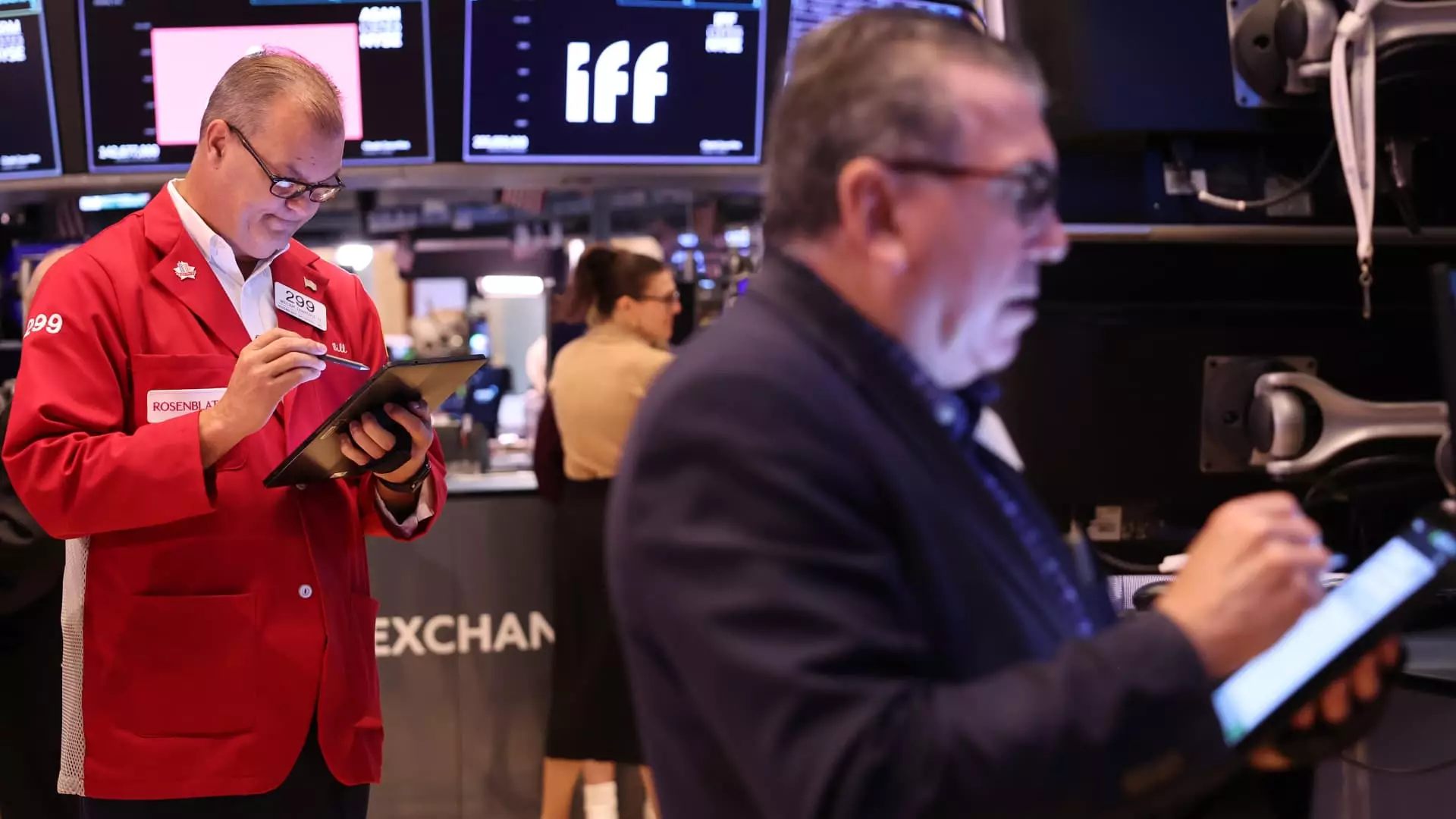As the financial world spins ever faster, stakeholders from retail investors to institutional analysts keenly await the insights that can dictate their next moves. The recent fluctuations observed in the stock market, specifically the Dow Jones Industrial Average reaching unprecedented heights, have spurred renewed interest and speculation. Here, we delve into some compelling statistics and trends that have captured the attention of investors, providing a nuanced understanding of the current market landscape.
The recent surge of the Dow to surpass the symbolic 43,000 mark is no mere coincidence; it represents a collective sentiment of growth optimism amid corporate earnings season. As of the latest updates, the blue-chip index is tantalizingly close to a record high, sitting just 1.9% below the zenith reached in June. Investors are particularly focused on stocks trading at or near all-time highs, with Nvidia being a front-runner in this domain. The tech powerhouse concluded trading at approximately $138.07, positioning itself just under its previous record of $140.76. A gain of nearly 14% in October underscores Nvidia’s status as a beacon of strength amidst broader market variability.
The semiconductor industry has shown remarkable resilience and growth, with the VanEck Semiconductor ETF (SMH) experiencing a 6.5% upswing in October. This sector is pivotal as it underpins various tech advancements, including developments in artificial intelligence (AI). Prominent players such as Intel and Micron Technology have also made significant strides, with respective gains of 19% over the past month. Micron’s CEO recently articulated how the burgeoning demand for memory and computational capacity is driving market momentum. This insight emphasizes that, while smartphones and PCs are regaining traction, the true innovation lies in next-gen applications that utilize memory technologies.
Shifting our focus to the financial sector, Bank of America stands out with a modest 5% gain over the last week, positioning itself 6% shy of its July peak. Citigroup, meanwhile, has demonstrated stable growth during the past three months, reflecting a 2.3% increase. Goldman Sachs, however, has emerged as a standout performer, achieving a new high of $522.75, indicative of a strengthened outlook as investors tune into its robust earnings reports. This disparity among major banking institutions elucidates how market conditions can vary, affecting each bank differently based on their individual strategies and market positioning.
Airlines have also been noteworthy participants in this financial rally, with United Airlines reporting a staggering 42% increase over three months. This impressive growth suggests a rebound in travel and consumer confidence as the world navigates post-pandemic realities. UnitedHealth Group is similarly positioning itself for success, boasting an 18% increase during the same timeframe. These companies exemplify sectors that have benefited from shifting consumer behaviors and market adjustments, indicating both recovery and strategic growth.
The Technology Sector’s Cryptocurrency Connection
Parallel to traditional stocks, the cryptocurrency realm has seen significant shifts. Bitcoin has reclaimed some ground, registering a 10% increase in recent weeks, largely driven by heightened interest exacerbated by macroeconomic trends. Companies like MicroStrategy and Coinbase have also noted substantial gains, 42% and 20% respectively, suggesting that institutional interest in cryptocurrencies continues to grow despite inherent volatility. The volatility mirrors overall market sentiment, where traditional stock performance heavily influences cryptocurrency price trajectories.
While the statistics offer valuable insights, it’s essential to approach these market movements with an analytical mindset rather than mere speculation. Polling data reflects a tightly contested landscape politically, suggesting potential repercussions for market performance as the political landscape evolves. Financial analysts urge caution, recommending a thorough review of market conditions and sector-specific dynamics before making major investments.
The current market state presents a complex tapestry of growth, recovery, and emerging opportunities. Trends detected in tech, finance, and travel industries offer a microcosm of broader economic health. Stakeholders should remain vigilant, utilizing all available tools and insights to navigate this shifting terrain effectively. The path forward is not merely about chasing gains but understanding the underlying factors that drive these movements, ultimately shaping investment strategies and market predictions for the months to come.

